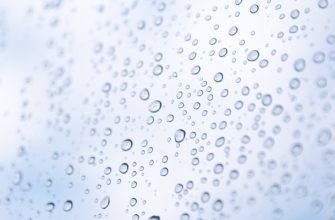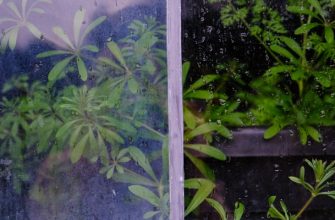- Revolutionizing Air Quality: The Top 5 Technologies You Need to Know
- Breathe Easy: How to Choose the Best Air Purification Solution
- From HEPA Filters to UV Light: Exploring the Most Effective Air Cleaning Technologies
- Transform Your Space: Innovative Solutions for Cleaner Air
- The Future of Indoor Air Quality: Top Technologies to Consider
- Tailoring Air Purification: Finding the Right Fit for Your Home or Office
Revolutionizing Air Quality: The Top 5 Technologies You Need to Know
Air purification technologies have evolved significantly, offering innovative solutions that enhance indoor air quality. The following five technologies represent the forefront of air cleansing, each providing unique benefits suitable for diverse environments.
- HEPA Filters: High-Efficiency Particulate Air (HEPA) filters capture 99.97% of particles as small as 0.3 microns, making them highly effective for removing allergens, dust, and smoke from the air.
- Activated Carbon Filters: These filters are designed to adsorb odors and volatile organic compounds (VOCs). They are particularly useful in spaces where chemical emissions are a concern, such as kitchens or workshops.
- UV-C Light Technology: Ultraviolet light purifies air by destroying bacteria and viruses. This technology is particularly effective in healthcare settings and high-traffic areas where pathogen control is critical.
- Ionic Air Purifiers: Ionic purifiers release negatively charged ions that attach to airborne particles, causing them to clump together and fall to the ground. This technology provides a unique approach to reducing dust and allergens.
- Photocatalytic Oxidation (PCO): PCO technology uses UV light to activate a catalyst that breaks down harmful pollutants into harmless substances. This advanced method effectively reduces indoor air contaminants.
Choosing the right air purification technology can significantly improve air quality in any space. By understanding the capabilities and applications of these cutting-edge systems, individuals can make informed decisions that enhance the health and comfort of their environments.
Breathe Easy: How to Choose the Best Air Purification Solution
Choosing the right air purification solution is essential for maintaining a healthy indoor environment. With numerous options available, it’s crucial to evaluate the effectiveness and suitability of different technologies. The best air purification solutions vary in their mechanisms and specific benefits, catering to diverse needs and spaces.
- HEPA Filters: These filters are renowned for their ability to capture 99.97% of airborne particles, including dust, pollen, and pet dander. Ideal for allergy sufferers, HEPA filters are a top choice for residential and commercial spaces.
- Activated Carbon: This technology excels in removing odors and volatile organic compounds (VOCs) from the air. Activated carbon is particularly useful in kitchens and areas with strong scents, ensuring a fresher atmosphere.
- UV-C Light Purifiers: Utilizing ultraviolet light, these purifiers kill bacteria, viruses, and mold spores. They are an excellent option for spaces requiring enhanced sanitation, such as hospitals and clinics.
- Ionic Air Purifiers: These devices release negatively charged ions that attach to airborne particles, causing them to settle out of the air. Ionic purifiers are effective in reducing smoke and allergen levels in various environments.
- Ozone Generators: While effective at eliminating odors and pollutants, ozone generators should be used with caution, as high concentrations of ozone can be harmful. They are best suited for unoccupied spaces.
When selecting an air purification solution, consider factors such as room size, specific air quality issues, and personal health needs. An effective air purification system not only enhances indoor air quality but also contributes to overall well-being. Proper maintenance and timely replacement of filters are key to ensuring optimal performance of any chosen technology.
In conclusion, identifying the best air purification solution involves understanding the unique benefits of each technology. By evaluating the specific requirements of a space, individuals can make informed decisions that lead to cleaner, healthier indoor air.
From HEPA Filters to UV Light: Exploring the Most Effective Air Cleaning Technologies
Когда речь заходит об очистке воздуха, технологии играют ключевую роль в создании здоровой атмосферы. Среди самых эффективных решений выделяются HEPA-фильтры и ультрафиолетовое (UV) излучение. Эти методы обеспечивают высокую степень очистки, устраняя аллергены, пыль и вредные микроорганизмы.
- HEPA-фильтры: Эти фильтры способны задерживать до 99,97% частиц размером до 0,3 микрона. Они идеально подходят для аллергиков и людей с респираторными заболеваниями.
- Ультрафиолетовое излучение: UV-лампы уничтожают бактерии и вирусы, проходящие через воздух. Этот метод эффективно дополняет традиционные фильтрационные системы.
- Ионизация: Ионизаторы очищают воздух, создавая отрицательно заряженные ионы, которые притягивают и нейтрализуют загрязнители, включая пыль и дым.
- Фотокаталитическая очистка: Эта технология использует свет для активации катализатора, который разрушает органические загрязнители. Это позволяет очищать воздух от токсичных соединений.
- Активированный уголь: Угольные фильтры эффективно абсорбируют запахи и химические вещества, что делает их отличным дополнением к другим технологиям очистки воздуха.
Каждая из этих технологий имеет свои преимущества и может быть адаптирована под конкретные условия и потребности. При выборе системы очистки воздуха важно учитывать размер помещения, уровень загрязненности и индивидуальные предпочтения пользователей.
Внедрение комбинации этих решений обеспечит максимальную эффективность очистки и поможет создать безопасную и комфортную среду для жизни и работы.
Transform Your Space: Innovative Solutions for Cleaner Air
Creating a healthier environment is essential for well-being, and innovative air purification technologies play a crucial role in transforming indoor spaces. Modern solutions for cleaner air not only enhance air quality but also contribute to a more comfortable living and working atmosphere. Various technologies are now available to meet diverse needs, making it easier to find the perfect option for any setting.
- HEPA Filters: High-Efficiency Particulate Air (HEPA) filters are renowned for their ability to capture airborne particles, including dust, pollen, and pet dander. These filters are essential for those suffering from allergies and respiratory issues.
- Activated Carbon Filters: These filters excel in removing odors and harmful gases, making them ideal for kitchens and spaces prone to unpleasant smells. They work effectively by adsorbing volatile organic compounds (VOCs) and other pollutants.
- UV-C Light Purification: Ultraviolet light technology eliminates bacteria and viruses in the air. This method is particularly beneficial in healthcare facilities and homes where hygiene is a top priority.
- Ionic Air Purifiers: Ionic purifiers release negatively charged ions that attach to airborne pollutants, causing them to clump together and fall to the ground. This technology is useful for reducing smoke and fine particles.
- Smart Air Purifiers: Equipped with sensors and connectivity features, these devices monitor air quality in real-time and adjust purification levels accordingly. They provide convenience and efficiency for modern lifestyles.
By integrating these cutting-edge solutions into daily life, individuals can significantly improve indoor air quality. It is crucial to consider specific needs when selecting the right technology. Factors such as space size, the presence of pets, and existing allergies should guide the decision-making process. Investing in a suitable air purification system not only enhances comfort but also promotes health and well-being.
In conclusion, the availability of diverse air cleaning technologies presents a unique opportunity for anyone looking to transform their space. Cleaner air leads to a healthier environment, making it vital to explore the options available and choose the ideal solution for specific requirements.
The Future of Indoor Air Quality: Top Technologies to Consider
Indoor air quality is becoming increasingly important as people spend more time indoors. The rise of pollution and allergens necessitates advanced technologies for air purification. Several innovative solutions are emerging to address this need, ensuring a healthier living environment.
- HEPA Filters: High-Efficiency Particulate Air (HEPA) filters are renowned for their ability to capture 99.97% of particles, including dust, pollen, and pet dander. These filters significantly improve indoor air quality by reducing allergens and irritants.
- UV-C Light Technology: Ultraviolet-C light technology effectively neutralizes airborne pathogens. By incorporating UV-C light into air purification systems, harmful bacteria and viruses can be eliminated, leading to safer indoor environments.
- Activated Carbon Filters: Activated carbon filters excel at absorbing odors and volatile organic compounds (VOCs). These filters play a vital role in enhancing indoor air quality by removing harmful gases and unpleasant smells.
- Smart Air Purifiers: Smart air purifiers utilize sensors and connectivity features to monitor air quality in real-time. These devices adjust their operation based on air quality readings, providing efficient and effective purification tailored to specific conditions.
- Ionizers: Ionizing air purifiers release negatively charged ions that attach to airborne particles, causing them to clump together and fall from the air. This technology can significantly reduce the number of allergens and pollutants in indoor spaces.
Investing in these advanced technologies can lead to substantial improvements in indoor air quality. With options ranging from HEPA filters to smart air purifiers, individuals can find the perfect solution for their specific needs. Ensuring optimal indoor air quality not only enhances comfort but also promotes better health and well-being.
Tailoring Air Purification: Finding the Right Fit for Your Home or Office
Choosing the right air purification system is crucial for ensuring a healthy environment in both home and office settings. With various air purification technologies available, it is essential to find the model that best suits individual needs. Understanding the unique benefits of each air purification technology can lead to informed decisions that enhance air quality.
- HEPA Filters: High-Efficiency Particulate Air (HEPA) filters are renowned for their ability to capture 99.97% of particles, including dust, pollen, and pet dander. This technology is ideal for allergy sufferers and those seeking to improve indoor air quality.
- Activated Carbon Filters: These filters excel at removing odors and harmful gases. They are particularly effective in kitchens and areas with high levels of VOCs (volatile organic compounds), making them a popular choice for spaces requiring odor control.
- UV-C Light Purifiers: Ultraviolet light technology targets bacteria and viruses, providing an additional layer of protection against airborne pathogens. This technology is particularly beneficial in offices and healthcare facilities where hygiene is paramount.
- Ionic Purifiers: Ionization technology helps to remove particles from the air by charging them, causing them to clump together and fall to the ground. This method is effective but may require regular cleaning of surfaces to maintain air quality.
- Photocatalytic Oxidation: This advanced technology uses light to activate a catalyst, effectively breaking down pollutants at a molecular level. It is suitable for environments where chemical contaminants are a concern.
When selecting an air purification system, consider factors such as room size, specific air quality concerns, and maintenance requirements. Tailoring the choice of air purification technology to the unique circumstances of a space can significantly enhance the overall air quality and promote a healthier living or working environment.








